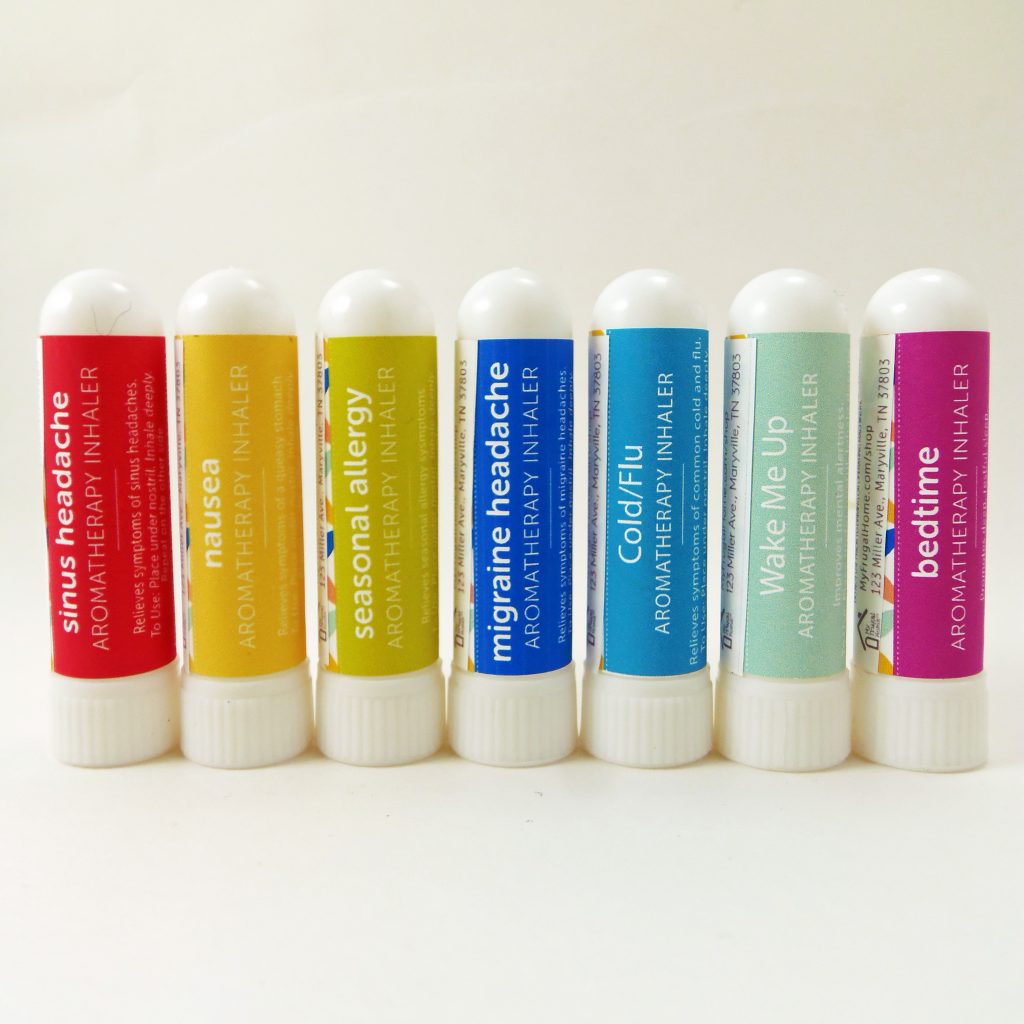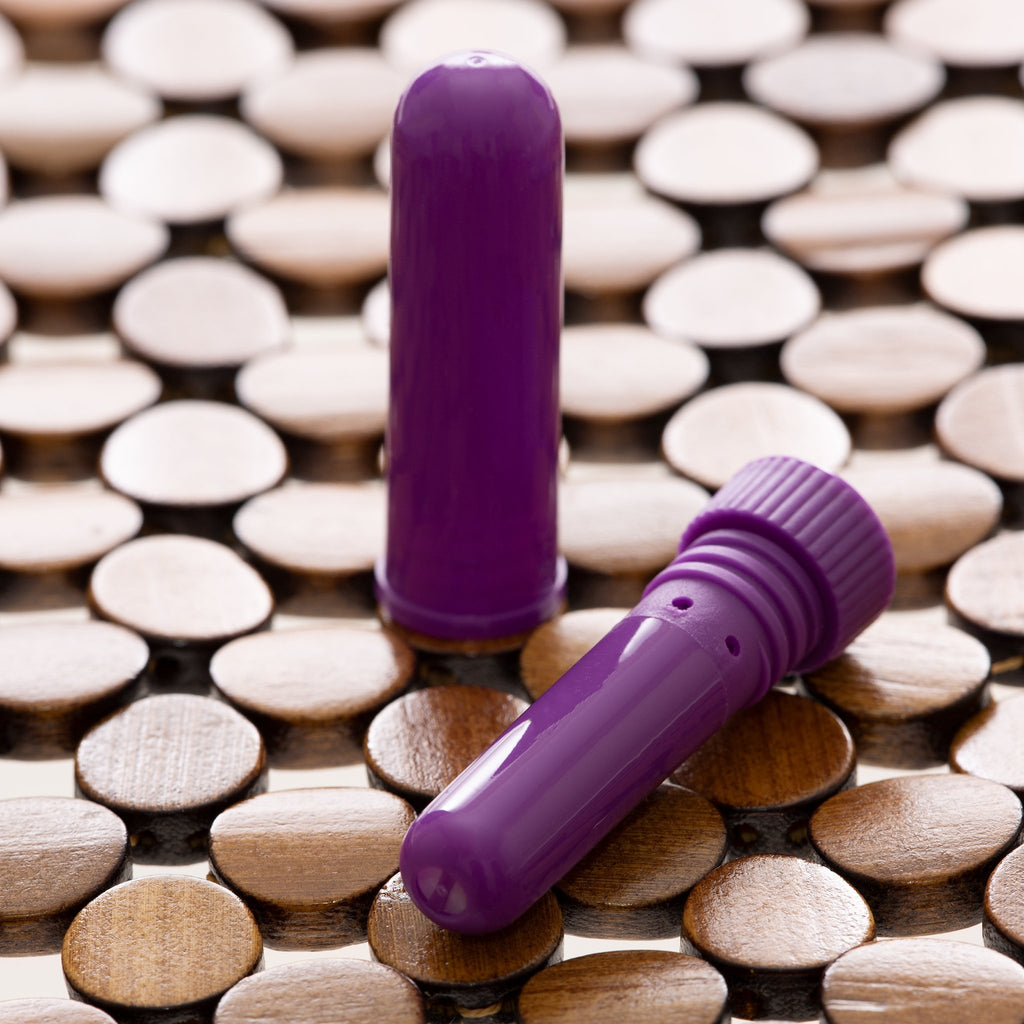In the realm of natural healing, aromatherapy inhalers emerge as a beacon of relief, offering a fragrant escape from the stresses of modern life. Discover the captivating world of these aromatic wonders, where essential oils dance together to create a symphony of therapeutic benefits.
From calming anxiety to easing headaches, aromatherapy inhalers harness the power of nature’s extracts, inviting you on a journey of relaxation and rejuvenation.
Aromatherapy Inhalers
Aromatherapy inhalers are small, portable devices that allow you to inhale essential oils for therapeutic benefits. Essential oils are concentrated plant extracts that contain the volatile compounds responsible for a plant’s scent and therapeutic properties. When inhaled, these compounds can interact with receptors in the nose and lungs, triggering a range of physiological and psychological responses.
Aromatherapy inhalers come in a variety of forms, including nasal inhalers, personal diffusers, and steam inhalers. Nasal inhalers are small, tube-shaped devices that are inserted into the nostrils. Personal diffusers are small, battery-operated devices that disperse essential oils into the air.
Steam inhalers are devices that vaporize essential oils and allow the user to inhale the steam.
Types of Aromatherapy Inhalers
- Nasal inhalersare small, tube-shaped devices that are inserted into the nostrils. They are typically used for short-term relief of congestion, headaches, and nausea.
- Personal diffusersare small, battery-operated devices that disperse essential oils into the air. They are typically used for aromatherapy purposes, such as promoting relaxation, improving sleep, and boosting mood.
- Steam inhalersare devices that vaporize essential oils and allow the user to inhale the steam. They are typically used for respiratory conditions, such as congestion, coughs, and sore throats.
Essential Oils for Aromatherapy Inhalers

Aromatherapy inhalers are a convenient way to enjoy the therapeutic benefits of essential oils. Essential oils are concentrated plant oils that contain the volatile compounds responsible for a plant’s scent and therapeutic properties. When inhaled, these compounds can interact with receptors in the nose and lungs, triggering a variety of physiological and psychological responses.
There are many different essential oils that can be used in aromatherapy inhalers, each with its own unique set of therapeutic properties. Some of the most common essential oils used in aromatherapy inhalers include:
- Lavender oil: Lavender oil is known for its calming and relaxing effects. It can help to reduce stress, anxiety, and insomnia.
- Peppermint oil: Peppermint oil is known for its stimulating and invigorating effects. It can help to improve alertness, concentration, and energy levels.
- Eucalyptus oil: Eucalyptus oil is known for its expectorant and decongestant effects. It can help to clear congestion, reduce inflammation, and improve breathing.
- Tea tree oil: Tea tree oil is known for its antibacterial and antifungal properties. It can help to fight infection, reduce inflammation, and promote healing.
- Lemon oil: Lemon oil is known for its uplifting and energizing effects. It can help to improve mood, boost concentration, and reduce fatigue.
These are just a few of the many essential oils that can be used in aromatherapy inhalers. When choosing essential oils for your inhaler, it is important to consider your individual needs and preferences. You may also want to consult with a qualified aromatherapist to help you choose the best essential oils for your specific needs.
Essential oils can be blended together to create custom aromatherapy inhalers that target specific health concerns. For example, a blend of lavender, peppermint, and eucalyptus oil can be used to help relieve stress and improve sleep. A blend of tea tree oil, lemon oil, and eucalyptus oil can be used to help fight infection and boost immunity.
Aromatherapy inhalers are a safe and effective way to enjoy the benefits of essential oils. They are easy to use and can be taken with you wherever you go. If you are looking for a natural way to improve your health and well-being, aromatherapy inhalers are a great option.
Creating Your Own Aromatherapy Inhalers

Creating your own aromatherapy inhalers is a simple and rewarding process that allows you to customize the benefits of aromatherapy to your specific needs. With a few basic supplies and a little creativity, you can create inhalers that provide relief from stress, headaches, congestion, and other ailments.
To make your own aromatherapy inhalers, you will need:
- Aromatherapy inhaler tubes (available online or at health food stores)
- Essential oils
- Cotton balls or wicks
- A dropper or pipette
Once you have your supplies, follow these steps to create your own aromatherapy inhalers:
Choosing the Right Essential Oils
The first step in creating your own aromatherapy inhalers is to choose the right essential oils. There are many different essential oils available, each with its own unique properties and benefits. When choosing essential oils for your inhalers, consider your specific needs and preferences.
For example, if you are looking for an inhaler to help you relax, you might choose lavender, chamomile, or bergamot essential oils. If you are looking for an inhaler to help you clear congestion, you might choose eucalyptus, peppermint, or tea tree essential oils.
You can also blend different essential oils to create your own custom inhalers. For example, you might blend lavender and peppermint essential oils to create an inhaler that is both relaxing and invigorating.
Blending Essential Oils
Once you have chosen your essential oils, you will need to blend them together. The amount of each essential oil you use will depend on your personal preferences. However, a good starting point is to use 2-3 drops of each essential oil.
To blend your essential oils, simply add them to a dropper or pipette and mix them together. You can then add the blended essential oils to your aromatherapy inhaler tubes.
Using Your Aromatherapy Inhalers
To use your aromatherapy inhalers, simply place the tube under your nose and inhale deeply. You can inhale for as long as you like, but most people find that inhaling for 5-10 minutes is sufficient.
You can use your aromatherapy inhalers as often as needed. However, it is important to listen to your body and stop using the inhaler if you experience any adverse effects.
Using Aromatherapy Inhalers for Specific Conditions
Aromatherapy inhalers can provide immediate relief for a variety of common ailments. By inhaling the aromatic compounds released from essential oils, you can directly target specific areas of the body and mind, promoting relaxation, reducing stress, and alleviating headaches.
Stress and Anxiety
Inhalers containing calming essential oils like lavender, chamomile, and bergamot can help reduce stress and anxiety. Inhale deeply for 5-10 minutes, allowing the scent to fill your lungs and relax your body. Repeat as needed throughout the day.
Headaches
Peppermint, eucalyptus, and rosemary are known for their analgesic and decongestant properties. Inhale these oils for 10-15 minutes to relieve tension headaches and sinus pressure. For best results, apply a cool compress to your forehead while inhaling.
Safety Considerations for Aromatherapy Inhalers
Aromatherapy inhalers offer a convenient and effective way to experience the benefits of essential oils. However, it is important to use them safely and with caution to avoid any potential risks.
One of the primary concerns with aromatherapy inhalers is the potential for allergic reactions. Some essential oils can cause skin irritation or respiratory problems in certain individuals. It is important to test a small amount of the essential oil on your skin before using it in an inhaler.
If you experience any redness, itching, or difficulty breathing, discontinue use immediately.
Another safety consideration is the potential for drug interactions. Some essential oils can interact with certain medications, so it is important to consult with your doctor before using aromatherapy inhalers if you are taking any prescription drugs.
Finally, it is important to use aromatherapy inhalers in moderation. Overuse can lead to headaches, nausea, or other adverse effects. It is recommended to use the inhaler for no more than 15 minutes at a time, and to take breaks throughout the day.
Safe Usage Guidelines
- Test a small amount of the essential oil on your skin before using it in an inhaler.
- Consult with your doctor before using aromatherapy inhalers if you are taking any prescription drugs.
- Use the inhaler for no more than 15 minutes at a time.
- Take breaks throughout the day to avoid overuse.
Wrap-Up
As we bid farewell to this aromatic exploration, let us embrace the transformative power of aromatherapy inhalers. May they continue to soothe our minds, uplift our spirits, and remind us of the healing magic that lies within the realm of nature’s scents.